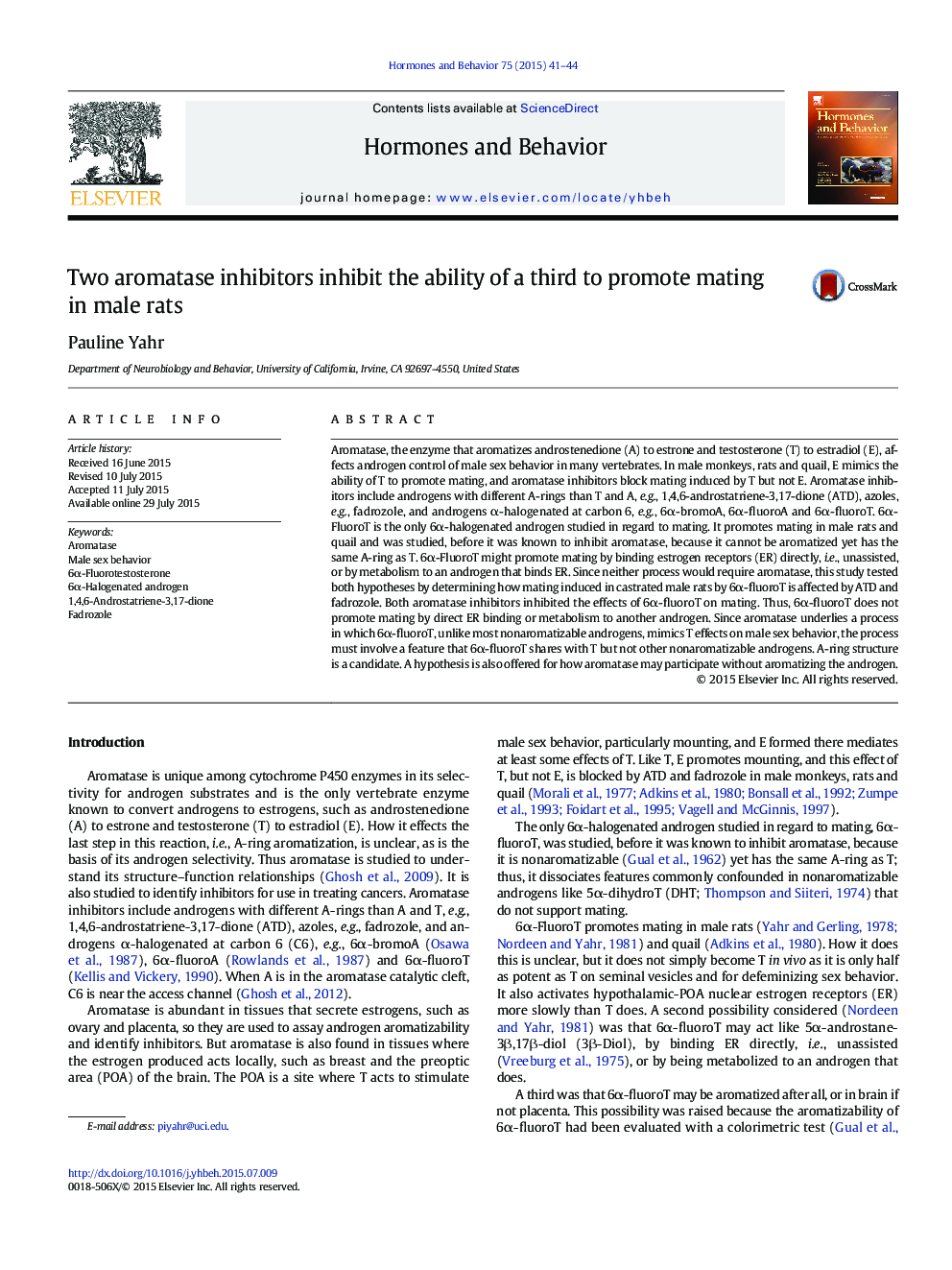| کد مقاله | کد نشریه | سال انتشار | مقاله انگلیسی | نسخه تمام متن |
|---|---|---|---|---|
| 6794669 | 540699 | 2015 | 4 صفحه PDF | دانلود رایگان |
عنوان انگلیسی مقاله ISI
Two aromatase inhibitors inhibit the ability of a third to promote mating in male rats
ترجمه فارسی عنوان
دو مهار کننده های آروماتاز مهار کننده توانایی یک سوم برای ترویج خوردن در موش های نر است
دانلود مقاله + سفارش ترجمه
دانلود مقاله ISI انگلیسی
رایگان برای ایرانیان
کلمات کلیدی
موضوعات مرتبط
علوم زیستی و بیوفناوری
بیوشیمی، ژنتیک و زیست شناسی مولکولی
علوم غدد
چکیده انگلیسی
Aromatase, the enzyme that aromatizes androstenedione (A) to estrone and testosterone (T) to estradiol (E), affects androgen control of male sex behavior in many vertebrates. In male monkeys, rats and quail, E mimics the ability of T to promote mating, and aromatase inhibitors block mating induced by T but not E. Aromatase inhibitors include androgens with different A-rings than T and A, e.g., 1,4,6-androstatriene-3,17-dione (ATD), azoles, e.g., fadrozole, and androgens α-halogenated at carbon 6, e.g., 6α-bromoA, 6α-fluoroA and 6α-fluoroT. 6α-FluoroT is the only 6α-halogenated androgen studied in regard to mating. It promotes mating in male rats and quail and was studied, before it was known to inhibit aromatase, because it cannot be aromatized yet has the same A-ring as T. 6α-FluoroT might promote mating by binding estrogen receptors (ER) directly, i.e., unassisted, or by metabolism to an androgen that binds ER. Since neither process would require aromatase, this study tested both hypotheses by determining how mating induced in castrated male rats by 6α-fluoroT is affected by ATD and fadrozole. Both aromatase inhibitors inhibited the effects of 6α-fluoroT on mating. Thus, 6α-fluoroT does not promote mating by direct ER binding or metabolism to another androgen. Since aromatase underlies a process in which 6α-fluoroT, unlike most nonaromatizable androgens, mimics T effects on male sex behavior, the process must involve a feature that 6α-fluoroT shares with T but not other nonaromatizable androgens. A-ring structure is a candidate. A hypothesis is also offered for how aromatase may participate without aromatizing the androgen.
ناشر
Database: Elsevier - ScienceDirect (ساینس دایرکت)
Journal: Hormones and Behavior - Volume 75, September 2015, Pages 41-44
Journal: Hormones and Behavior - Volume 75, September 2015, Pages 41-44
نویسندگان
Pauline Yahr,
